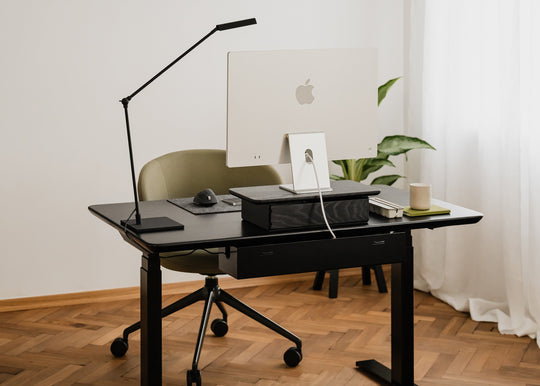
Women in remote work
A fully remote or hybrid work style is no longer an unusual work arrangement or a rare employee perk – this model of work is steadily becoming the new norm, at least in professions that allow for it. Working out of a home office has its benefits as well as drawbacks, but the situation gets more nuanced when we factor in gender. Due to historical context and the ‘housewife’ stereotype, female employees face an additional set of obstacles. Is remote work a good solution for women?

Photo by Bonnie Kittle on Unsplash
Flexibility and asynchronous work
Let’s begin with the advantages. There are plenty of upsides to remote work; for some, the ability to perform their professional duties in the solitude of their own homes stimulates creativity, whereas others find the social office atmosphere most beneficial for their productivity levels. The biggest plus of having a home office is, unquestionably, the flexibility in time management – even if you don’t work within rigidly set hours, remote work saves you time you would otherwise spend commuting: having to leave early to avoid traffic, waiting for a delayed bus, or dealing with unforeseen accidents. It becomes easier to plan your day when you focus on your responsibilities and not things outside of your control.
Asynchronous work is a model which doesn’t require all employees to be available online at the same time. This system emphasizes and rewards diligent and timely work, and not whether you do it between the hours of 9 and 5. Being able to work asynchronously allows you to plan your most important tasks for the specific time of day (or night) when your productivity is at its peak, which positively affects your work performance.

Photo by Andrew Neel on Unsplash
Remote work models
The most common type of remote work is currently the hybrid model. The Harvard Business Review distinguishes 2 of its forms:
- Flexible hybrid – all team members can work in a hybrid manner, some of the work is done in an office, some remotely;
- Fixed hybrid – a part of the team exclusively works in the office, whereas a part only works remotely.
While the first model seems to even the playing field, the fixed hybrid style can potentially lead to unequal treatment: in such teams, it can sometime seem like the remote workers are less committed than those who spend 8 hours (or more) in the office. Remote work is less ‘visible’ in the fixed hybrid approach, even though there is no difference in their results. Women find themselves in a rather precarious position due to the common stereotype that they are less willing to fully commit to their careers than men – especially when it comes to mothers. A fully remote type of work can therefore limit their access to more ambitious projects or to senior positions.

Photo by Christin Hume on Unsplash
Can remote work curb your career?
We should not forget that it is still very common for women to bear the responsibility for most household chores and childcare responsibilities, and for their professional endeavors to be perceived as less important than those of men. When a child gets sick or there are no available places in daycare, it is most likely a woman who takes some time off or quits her job altogether, at least for some time.
Remote work can, in such cases, be both a blessing and a curse. On one hand, having a home office and somehow elastic work hours allow them to better manage childcare and simultaneously fulfill themselves professionally (provided they have an involved partner or a stable support network). However, someone working remotely in a fixed hybrid model while simultaneously taking care of their children can be perceived as less effective and, in turn, inadequately compensated, omitted in decision making processes, or excluded from promotions. According to Deloitte’s “Women at Work” report from 2022, 60% of women working in a hybrid style were excluded from company meetings, and half of them admitted they fear their work is not ‘visible’ enough for their employers, stunting their careers.
Despite all of its upsides, remote work still carries certain risks – especially for women. The good news is that companies which effectively manage remote teams and reward the quality of work instead of attendance do exist.
Sources:
https://www.sciencedirect.com/science/article/abs/pii/S0191308512000093
https://hbr.org/2022/03/women-face-a-double-disadvantage-in-the-hybrid-workplace
https://www.theguardian.com/society/2022/sep/25/hybrid-working-may-hold-back-womens-careers-say-managers
https://www2.deloitte.com/content/dam/Deloitte/global/Documents/deloitte-women-at-work-2022-a-global-outlook.pdf








